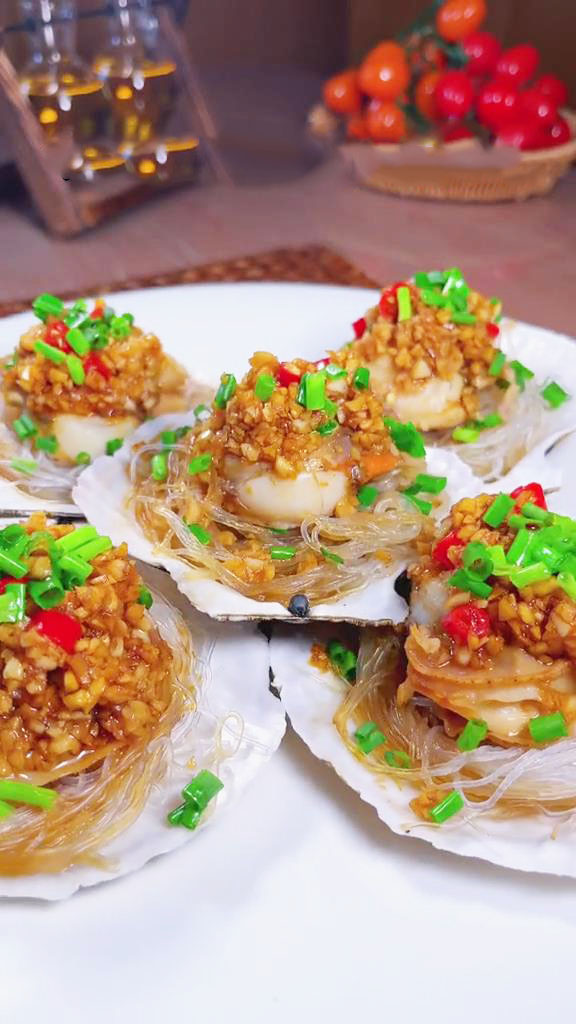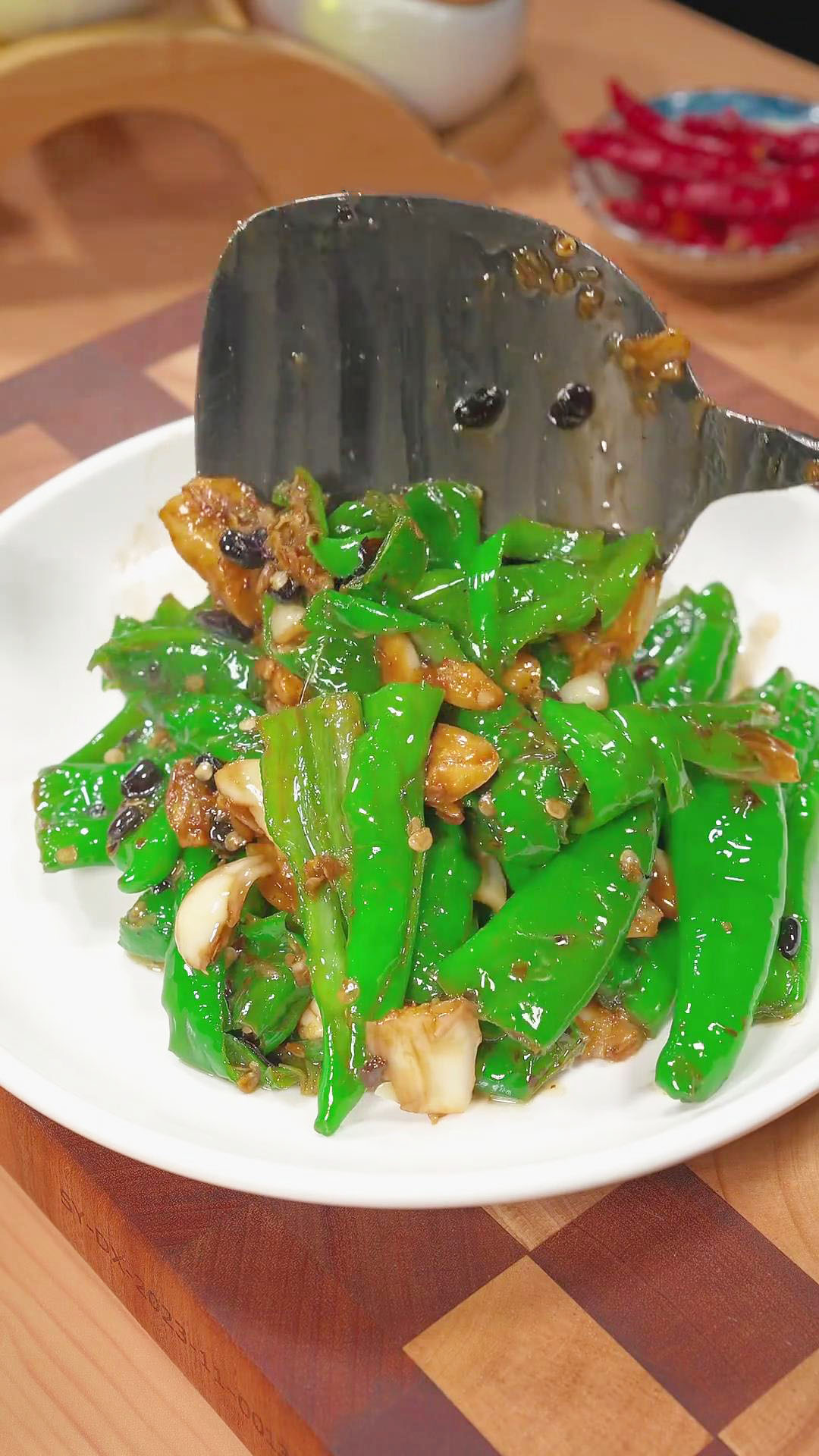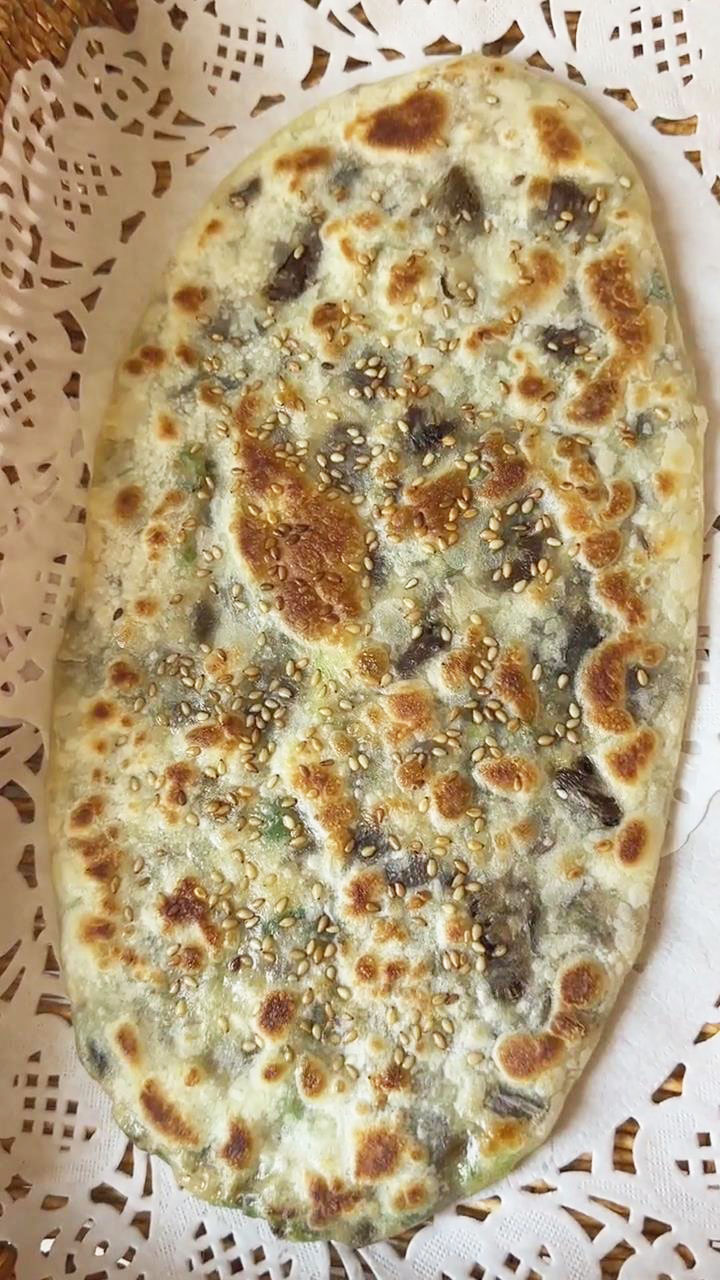This post may contain affiliate links. Please read our disclosure policy.
From air-fried bok choy to stir-fried bok choy and mushrooms, I have created several bok choy recipes to try this delicious vegetable in different tastes and styles. Another must-try recipe is blanched bok choy with a savory sauce packed with vegetables. The sauce is prepared with minced garlic, shredded green onions, and shredded red peppers.
Simply blanch your bok choy and pour the delicious sauce on top. Try this no-fuss dish with my recipe guide where you’ll also learn about tips, storage, and cooking techniques.
What Does Blanched Bok Choy Taste Like?
Bok choy is a leafy vegetable categorized as Chinese cabbage that is typically available all year round.
You can recognize this vegetable with its green leaves and long thick stems that are either white or light green. It can be eaten raw or cooked with a slight difference in taste and texture.
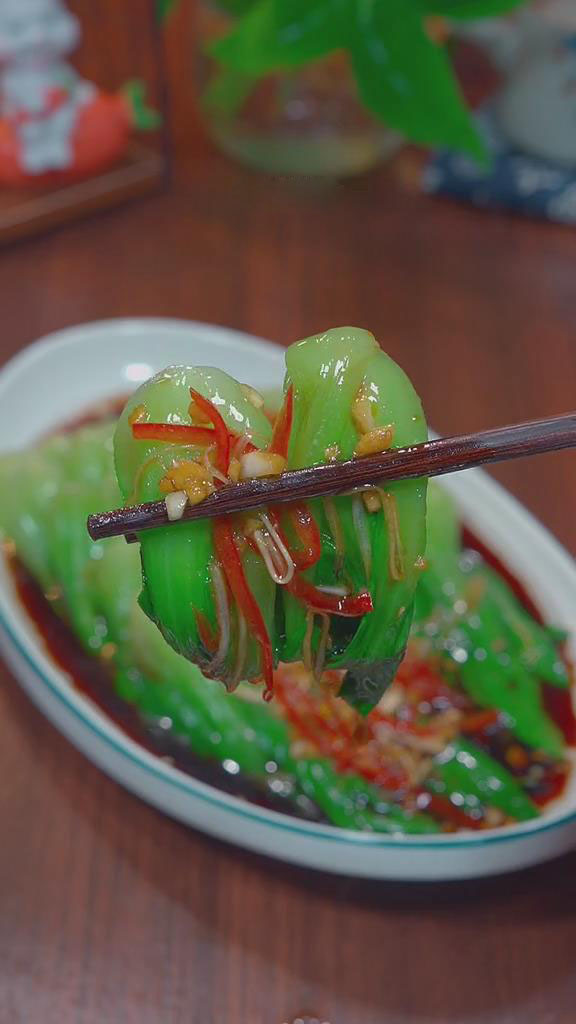
Generally, bok choy has a mild flavor. It is sweet with a bit of bitterness and mustard-like taste. Uncooked bok choy stems are crunchy like celery, whereas blanched bok choy should be tender with delicate leaves.
Preparing bok choy is simple and easy since you only need to clean, chop, and blanch the bok choy. Its mild taste makes it versatile and easy to pair with several savory dishes and sauces. You can have blanched bok boy as a side dish for lunch or dinner.
Why Blanching Bok Choy Is Needed
Blanching is a cooking technique where you cook vegetables in boiling water for a few minutes and then submerge them in ice-cold water.
Rinsing or submerging in an ice bath or cold water is an important second step in the blanching process in order to stop the bok choy from cooking any further and prevent soggy leaves. Not only is blanching used for cooking a dish but for storage as well.
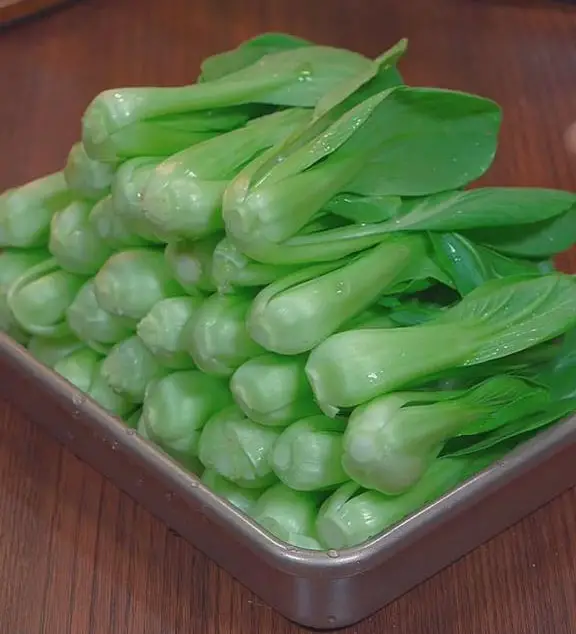
Blanching before freezing the bok choy slows or stops the enzyme action that leads to deterioration of flavor and texture.
Depending on the type of vegetable and the amount, some vegetables may take 1 to 5 minutes to blanch. In my recipe, the bok choy is blanched for 30 seconds.
How To Store And Reheat Blanched Bok Choy
Whether you have leftover blanched bok choy or plan to cook a meal in advance, you can store and reheat it to consume later.
Store bok choy with its sauce in a container and cover it with a lid or plastic wrap. Keeping it covered in the fridge can help maintain its freshness for up to three days.
You can reheat the dish in a microwave for a few minutes. Remember, do not overheat bok choy to avoid turning the leaves limp and mushy. Aside from a microwave, you can also reheat it in a pan on low heat for a few minutes.
Alternatively, bok choy can also be stored in the freezer, but the taste and texture will lose their quality the longer it is frozen. For this reason, I always recommend consuming newly cooked food while hot and fresh.
How do you store fresh and uncooked bok choy? Here’s how to properly store bok choy in the fridge or freezer to prolong its shelf life before cooking:
- Short-term storage in the fridge: Do not wash the bok choy when storing it in the fridge. If you wash the bok choy, it will wilt faster because of the absorbed moisture from the water. Instead, it would be best to keep it in a zipper bag or plastic bag with holes for air circulation or cover it completely with aluminum foil. You can also store bok choy in the refrigerator in a jar of cold water. Put the stem upright in the jar and let the leaves dangle. It should last up to three days to a week in the fridge.
- Long-term storage in the freezer: Uncooked bok choy can last for up to 8 to 12 months in the freezer when kept in an airtight freezer bag. You can cut the base of the stem to separate each bok choy leaf for cleaning. Clean it with a damp paper towel or blanch it in boiling water for a minute and rinse it in cold water before freezing.
Ingredient Tips And Alternatives For Blanched Bok Choy
You can prepare this dish with your preferred ingredients and adjust the taste according to your taste buds. Although I already have a list of ingredients needed for this recipe, there are several alternatives you can use in case you don’t have them or want to customize this dish further to make your own version.
Follow my top ingredient tips and alternatives below:
- Bok choy: As a general rule when picking out any vegetable, always choose the freshest batch. Bok choy leaves should be green and not yellow or brown. Moreover, the stems should be firm and white or greenish. You can use baby bok choy (the shorter type) or regular bok choy.
- Garlic: In this recipe, the garlic is minced in order to have a stronger and more pungent flavor in the sauce. Plus, the bits of garlic add a bit of texture to the sauce. If you don’t have garlic cloves, you can substitute them with garlic powder or granules. Replace 1 clove of garlic with 1/8 tsp of garlic powder or 1/4 tsp of granulated garlic.
- Green onion: Green onions have a sweeter and milder taste than white or yellow onions. It has the onion flavor you love without overpowering the overall taste of the sauce. You can substitute green onions with chives, shallots, white onions, yellow onions, or red onions if you don’t have green onions.
- Red pepper: Red bell pepper has a mild and sweet flavor with a hint of peppery and citrus taste. It adds a crunchy texture to the sauce. You can substitute red pepper with yellow or orange bell pepper since the taste is similar. However, yellow or orange peppers are not as sweet and citrusy as red peppers.
- Light soy sauce: The saltiness of soy sauce adds depth to this dish. Dark soy sauce can be substituted, but you may need to adjust the quantity. Aside from dark soy sauce, you can also try tamari, liquid aminos, coconut aminos, or gluten-free soy sauce.
- Oil: Any cooking oil will do for this recipe. Oil is needed for the blanching step and mixing of the sauce. Use olive, avocado, sesame, or safflower oil for a healthier option. If you want a neutral taste, go for peanut, soybean, or vegetable oil. For the sauce ingredients, you will need boiled oil. Any oil can come to a boil, but if you want an oil with a higher smoke point, use avocado oil, peanut, canola, or corn oil. The oil’s smoke point is when it no longer shimmers and starts smoking.
What You Need For Blanched Bok Choy With Vegetable Sauce
Getting started with this recipe is easier than you think. All ingredients are common items in grocery stores and supermarkets. You probably already have them in your kitchen!
As for the kitchen items, use any pot or pan for blanching and your everyday knife and chopping board to chop the vegetables.
Kitchen Equipment
- Pot or pan for blanching
- Spoon or chopsticks for stirring
- Heat-resistant bowl for mixing the sauce
Ingredients
Blanching the bok choy
- 250g baby bok choy
- Water for blanching
- 1 tbsp oil
- 1 tsp salt
Preparing the sauce
- 1 tbsp minced garlic cloves
- 5g shredded green onion
- 5g shredded red pepper
- 3 tbsp boiled oil
- 2 tbsp light soy sauce
How To Cook Blanched Bok Choy With Vegetable Sauce
Once you’ve gathered all the ingredients and kitchenware, you can begin making the recipe.
If you want more guidance, you can watch how I made this recipe through my Instagram and Tiktok tutorial videos. The recipe basically has two main steps: blanching the bok choy and mixing the sauce.
Blanch the baby bok choy
Prepare the baby bok choy by cleaning it with water, ensuring no dirt is left. Then, put water in a pan or pot and bring to a boil. Once the water boils, add 1 tbsp oil and 1 tsp salt.

Then, add the baby bok choy and blanch for 30 seconds.

Take out the baby bok choy and drain the excess water.
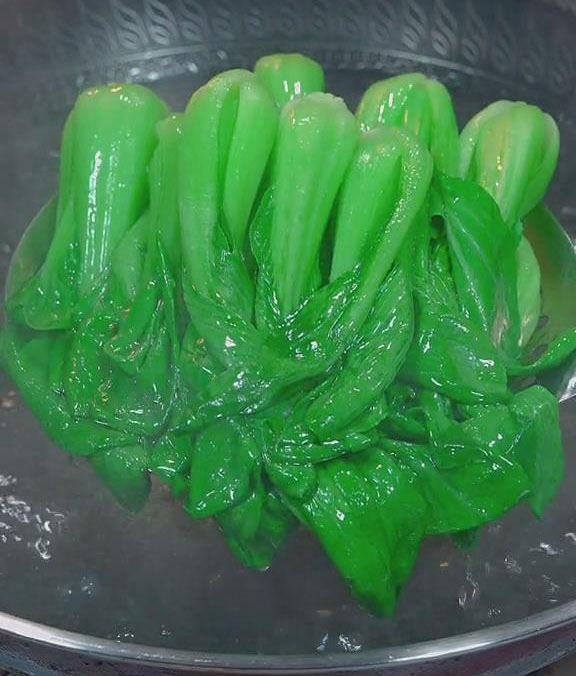
Lastly, arrange the baby bok choy on a serving plate.
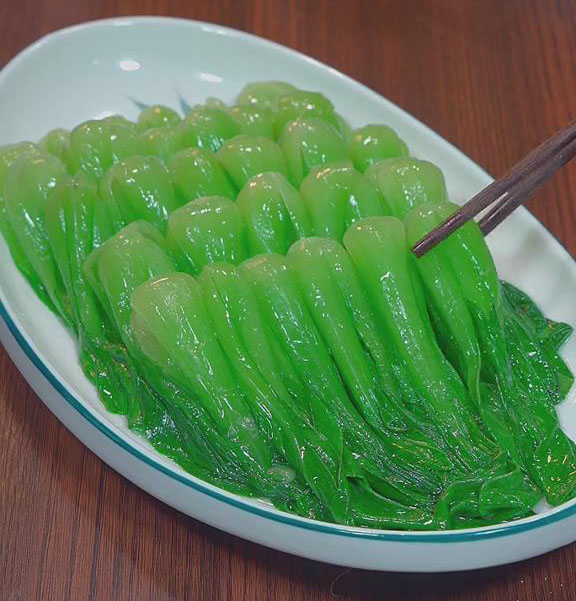
Prepare the sauce with vegetables
In a heat-resistant bowl, add 1 tbsp minced garlic cloves, 5g shredded green onion, and 5g shredded red pepper. Then, get a pan and heat 3 tbsp oil until it boils.
Once the oil boils, pour it into the bowl with the vegetables. Be careful when pouring the boiled oil as it will cause the vegetables to sizzle and cook in its heat.

Next, add 2 tbsp light soy sauce. Mix the ingredients well.
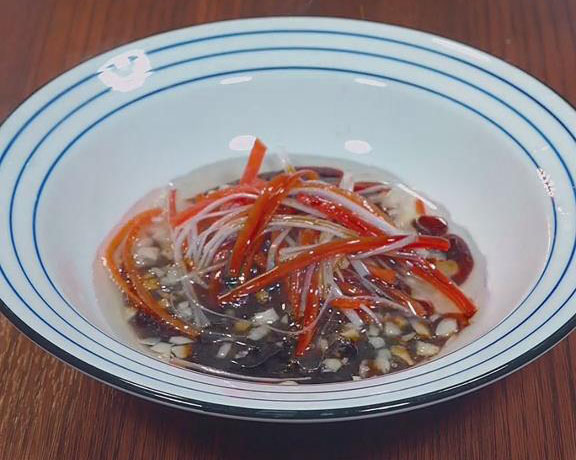
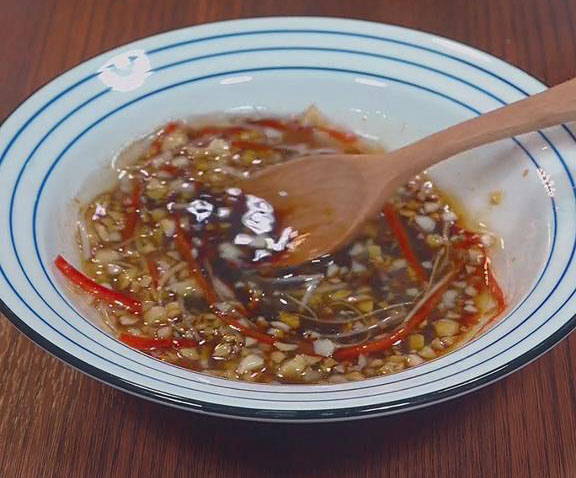
Lastly, pour the sauce evenly over the baby bok choy.
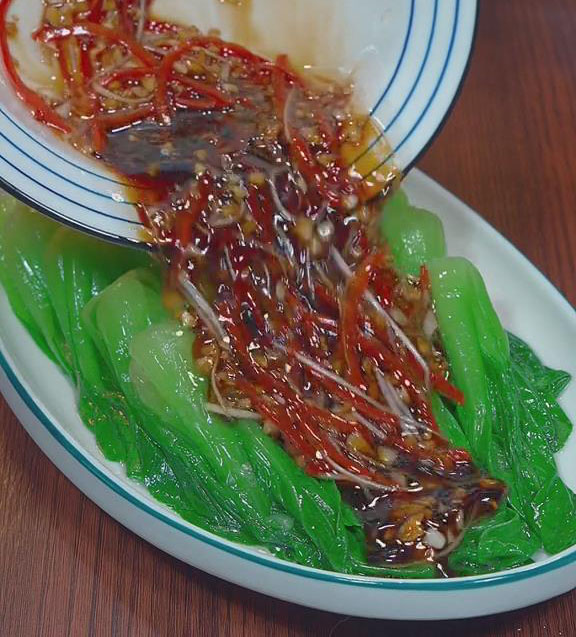
Serve while hot and enjoy it with your favorite main dishes.
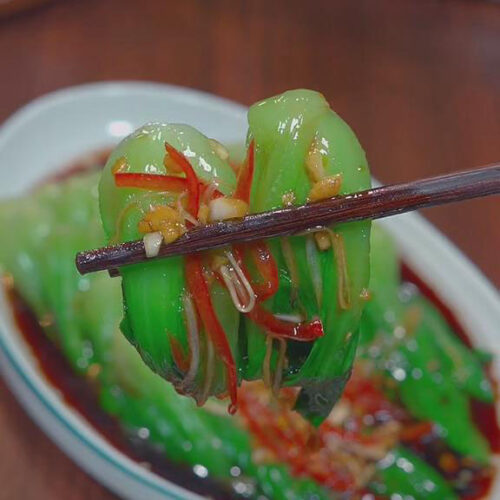
How To Blanch Bok Choy
Equipment
- Pot or pan for blanching
- Spoon or chopsticks for stirring
- Heat-resistant bowl for mixing the sauce
Ingredients
Blanching the bok choy
- 250 g baby bok choy
- Water for blanching
- 1 tbsp oil
- 1 tsp salt
Preparing the sauce
- 1 tbsp minced garlic cloves
- 5 g shredded green onion
- 5 g shredded red pepper
- 3 tbsp boiled oil
- 2 tbsp light soy sauce
Instructions
Blanch the baby bok choy
- Prepare the baby bok choy by cleaning it with water, ensuring no dirt is left.
- Then, put water in a pan or pot and bring to a boil.
- Once the water boils, add 1 tbsp oil and 1 tsp salt.
- Then, add the baby bok choy and blanch for 30 seconds.
- Take out the baby bok choy and drain the excess water.
- Lastly, arrange the baby bok choy on a serving plate.
Prepare the sauce with vegetables
- In a heat-resistant bowl, add 1 tbsp minced garlic cloves, 5g shredded green onion, and 5g shredded red pepper.
- Then, get a pan and heat 3 tbsp oil until it boils.
- Once the oil boils, pour it into the bowl with the vegetables. Be careful when pouring the boiled oil as it will cause the vegetables to sizzle and cook in its heat.
- Next, add 2 tbsp light soy sauce.
- Mix the ingredients well.
- Lastly, pour the sauce evenly over the baby bok choy.
- Serve while hot and enjoy it with your favorite main dishes.


